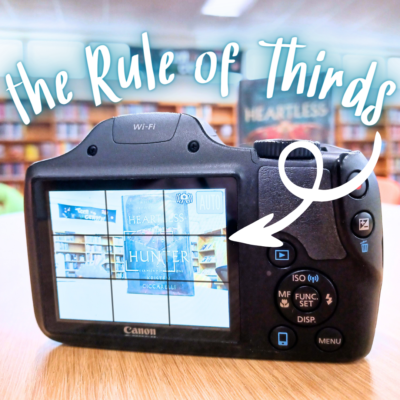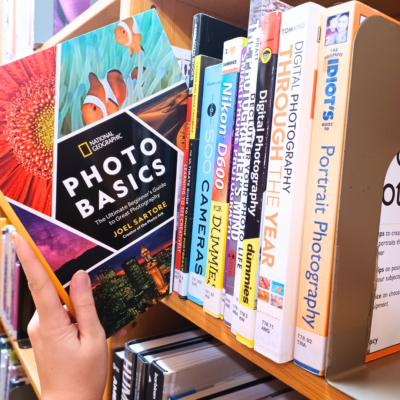
May is National Photography Month! Whether you’re using a smartphone, a digital camera, or an old-school film camera, we’ve got some awesome photography tips and tricks to help you elevate your craft. You might have heard the phrase, “A picture is worth a thousand words,” keep that in mind as you frame your photography! Use your photos to convey emotions, narratives, and experiences. Capture candid moments, expressions, and details that evoke a sense of storytelling in your images. You can achieve this through the use of lighting, perspective, and composition, all of which we’ll touch on in this post! Are you ready to take your photography skills to the next level? Let’s dive in and explore the fascinating world of photography!

Experiment with different angles and perspectives to add creativity to your photos. Try shooting from high above, down low, or from unusual vantage points to create captivating images. Get creative! Shooting from high above can offer a bird’s eye view, revealing patterns and textures not easily seen from ground level. Conversely, getting down low can provide a fresh and intimate look at your subject, bringing a new depth to your images. For a closer look at the world around you, consider using a “macro” lens. This specialized lens allows you to capture intricate details of small subjects, unveiling a whole new world of beauty.
On the other hand, a “fish eye” lens can give your photos a unique curved effect, expanding your frame and adding a touch of whimsy to your shots. Don’t be afraid to seek out unusual vantage points to inject intrigue into your photos. Whether it’s perching on a rooftop or lying on the ground, these perspectives can transform ordinary scenes into extraordinary works of art.

Composition is an important part of any photograph. Consider the elements within your frame. You don’t always have to keep your subject (the main focus of your image) right in the center every time! Look for leading lines, symmetry, patterns, and framing techniques to create visually striking compositions. One way to do this is through the “Rule of Thirds”. This “rule” is really just a photography trick that helps your subjects shine! The 3×3 grid lines help you align elements of your image in different parts of the shot. Use the rule of thirds to compose visually appealing images by placing key elements along the intersecting lines or at their points. And the best part is that most digital cameras and smartphones come with a ‘rule of thirds’ built-in setting! Check your phone camera’s settings for a “rule of thirds” or “grid lines” option to try it for yourself!

Where your light is coming from can be an important element to consider! Is your light coming from the sun, a lamp in your house, streetlights outside, or your camera’s flash? Just like holding up a flashlight to illuminate different parts of your face, where your light comes from can help to create the mood or tone of your photograph. When you’re outside or in a room with lots of windows, pay attention to natural light and how it interacts with your subjects at different times of day. Golden hour, that magical time just after sunrise or before sunset, offers soft, warm light that can transform your photos. You can also experiment with shadows and highlights to add depth and drama to your images. This creates contrast between the light and dark parts of your image, making the lighter parts of your image “pop!”

A photographer doesn’t have to be famous to create work worth studying. You can take inspiration from the work of renowned photographers, or you can study someone you follow on Instagram! We also have tons of books and resources on photography here at the library– biographies of famous photographers, editing guides, and lessons on how to improve your craft! Check out the links at the bottom of this post to learn more about photography through our resources.
Explore photo editing apps or software to enhance your images. You can download these directly onto your phone or use a computer for more precise edits! You can use tools like Canva, Photoshop, or Pixlr to adjust the exposure, contrast, and colors, and apply creative filters to give your photos a unique look. You can also use the built-in editor in your cell phone’s photo gallery, though they typically aren’t as powerful.

Finally, Share Your Work! Don't keep your photos hidden, share your best shots on social media, photography forums, you could even submit your photos to the county fair! Embrace feedback, learn from others, and celebrate your progress.Have some photos you want to share with us? Tag us on instagram @ccplonline, we’d love to see the photos you take!
Now that you're armed with these photography tips grab your camera and start capturing the world around you in new and exciting ways.
Want to explore more lessons in photography? Here are just a few of the titles from our catalog you might want to check out!





